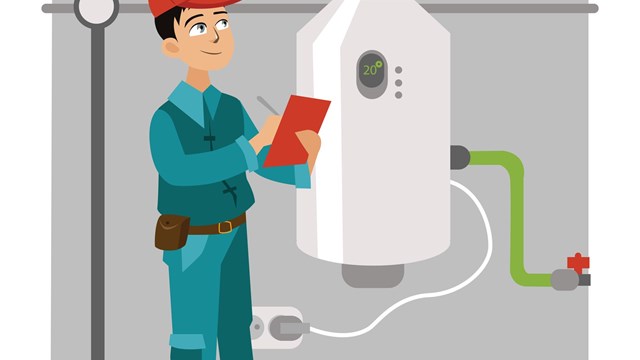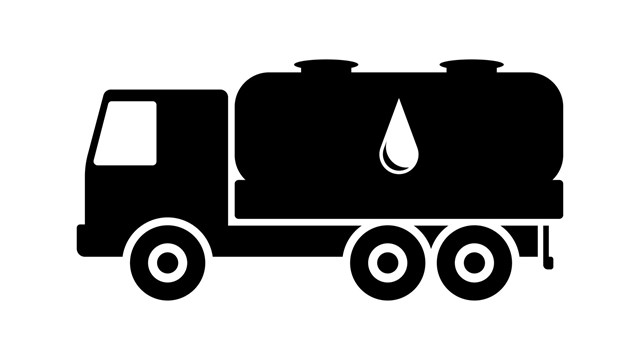If you want to catch mice the simple solution is to use a mouse trap. If the mouse trap does not work, and often they don't, then you have to find an alternate solution. One good solution is to get a natural predator of the mouse to assist. The house cat is about as effective a mouse eradication tool known to man and they will accomplish the job. A simple solution for a simple problem.
Don’t Get Steamed
The same goes if you're going to try to trap steam, you find the most effective way to accomplish this, and what is the tool to use? It's known as a steam trap. Now you may be asking, what does a steam trap do? To answer that question, we have to examine what are the different types of steam heating systems? There are two general types of low pressure steam heating systems—there are one pipe systems and two pipe systems. In a one pipe steam system, steam and condensate share the same pipe to the radiator. In a two pipe steam system, the steam enters the radiator through one pipe and condensate leaves through another pipe at the opposite end of the radiator. That is what we mean by the term—two pipe steam heating.
The problem then is the following: How do you prevent steam from leaving the radiator so it does not get into the condensate return system? There are various ways of solving this problem. The most commonly used technique is to put a “steam trap” at the end of the radiator.
A steam trap is a mechanical device that has to do two things: It has to allow the condensate to leave a radiator while at the same time preventing steam from getting into the condensate return lines. The type of trap used for this purpose is a thermostatic trap. There are also float and thermostatic traps on the ends of the main steam lines. These traps are designed to handle the larger amounts of condensate which forms in the main steam lines in basements and cellars of residential buildings.
Two pipe steam systems revolutionized the heating of buildings. You had much better control than a one pipe steam system. You could modulate steam flow at a radiator manually through a throttling valve. Because you had better control, you could heat much larger buildings. Typically, smaller apartment buildings had one pipe steam systems.
Two Pipes are Better Than One
Two pipe steam systems were also more expensive to install than one pipe steam systems because you needed two sets of pipes, one set for the steam lines and one set for the condensate return lines. Some of the extra expense was offset by the use of smaller lines for the steam supply lines to the radiators because there was very little condensate in the supply lines compared with the steam lines necessary for a one pipe steam system. Two pipe steam systems were also installed in single-family homes where the owner was willing to pay for it.
The thermostatic trap also functions as an air vent. So the first thing that happens is that the air is vented out of the system’s steam trap. If the steam trap fails in a closed position, the air is trapped in the radiator and it stays cold. This problem is rare, but it can occur.
Every thermostatic radiator trap has a bellows that is filled with an alcohol-water mixture. The manufacturer sets the mixture to boiler at 180 degrees Fahrenheit. As steam approaches the trap, the alcohol-water mixture flashes off and expands. That expansive force drives the bellows out, pushing the pin into the seat and closing the trap. As the steam gives up its latent heat and condenses, the alcohol mixture inside the bellows senses the drop in temperature and opens to let the condensate flow back to the boiler.
How Long Do Thermostatic Traps Last?
As you can surmise, the traps are constantly opening and closing all through the heating season. In a typical New York City building, the steam may be live in the steam lines about 900 hours per season. This trap may be opening and closing about three times per minute. Thus in a single heating season, the trap may be opening and closing about 162,000 times. After six years, the trap may be opening and closing more than one million times.
That is a lot of wear and tear on the thin mechanical bellows. Simple metal fatigue will alone kill the trap after a few years. There is more to consider. For example, water hammer, back pressure in the return, and the corrosive nature of the condensate. Typically, a steam trap only has a useful work life of three to five years.
You can get heavy duty steam traps that are filled with wax. They are well-made, but on the average, they only have a useful service life of approximately ten years.
When did you last replace the steam traps in your building? If you don't know, they are ready for replacement. Bad traps can be the major cause of water hammer problems, and steam in the condensate lines can cause overheating in your building. Supers often increase the steam pressure to make up for the losses in system pressurization from having bad steam traps. Increased steam pressure can be the cause of pipe knocking in the system. Also, bad traps lead to losses in the vent pipe at your condensate receiver, if you have one.
Local Law 87 and its Impact on Steam Traps
If you have more than 50,000 square feet in your building and you have a two pipe steam system with thermostatic traps, Local Law 87 forces you to test your traps. In my view, testing the traps is a waste of time. They are bad if you don't remember when you last changed all of them. For better or for worse, you are going to have to replace your steam traps.
I was in a church that had bad steam pipe knocking problems. I told them that the traps needed replacement. The building was more than 100 years old. The traps did not have wrench marks on them indicating that nobody ever changed them or the inserts.
Believe it or not, most of the traps were original to the building. (More than 100 years old) Some of them had more than ten layers of paint on them. Also, believe it or not, the church was convinced to replace all the traps in the building. Voila, pipe knocking problem solved.
For once, someone actually listened to me!
Daniel Karpen is a professional engineer and consultant based in Huntington, New York.










Comments
Leave a Comment